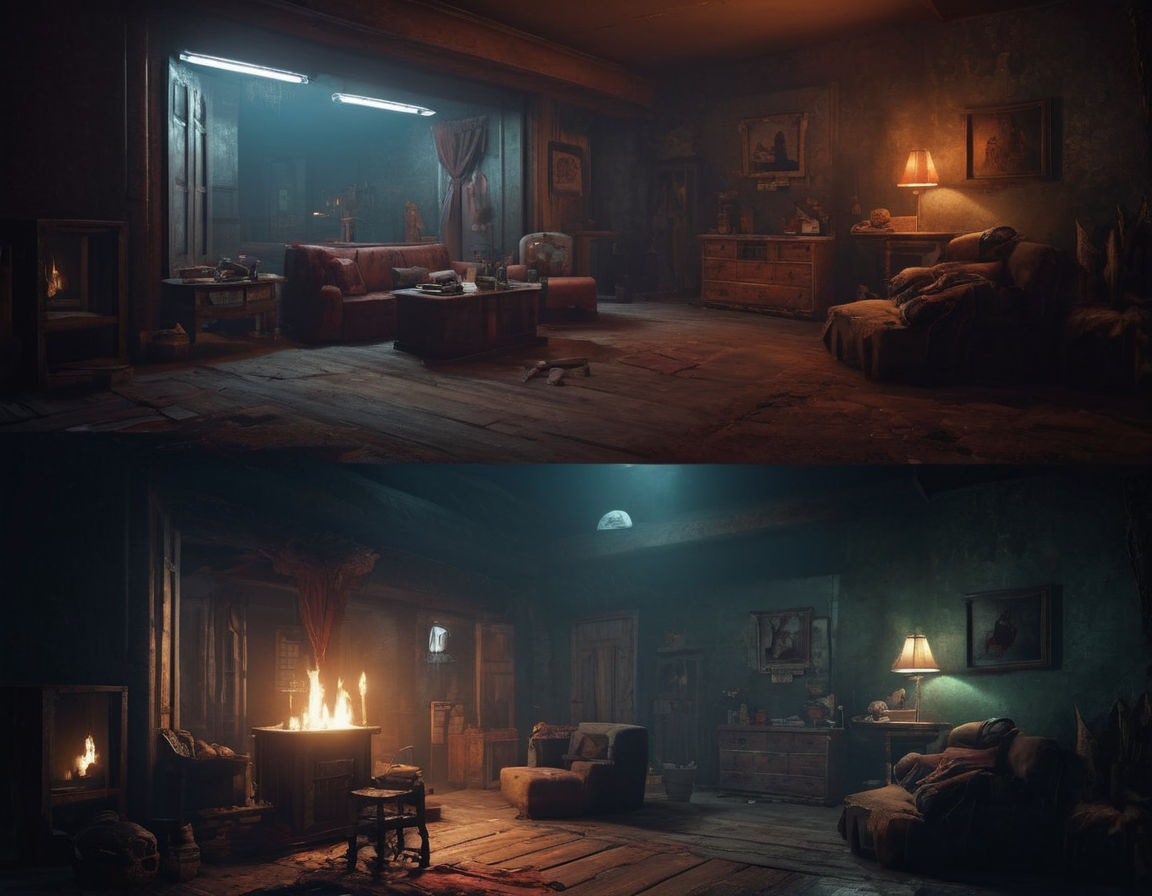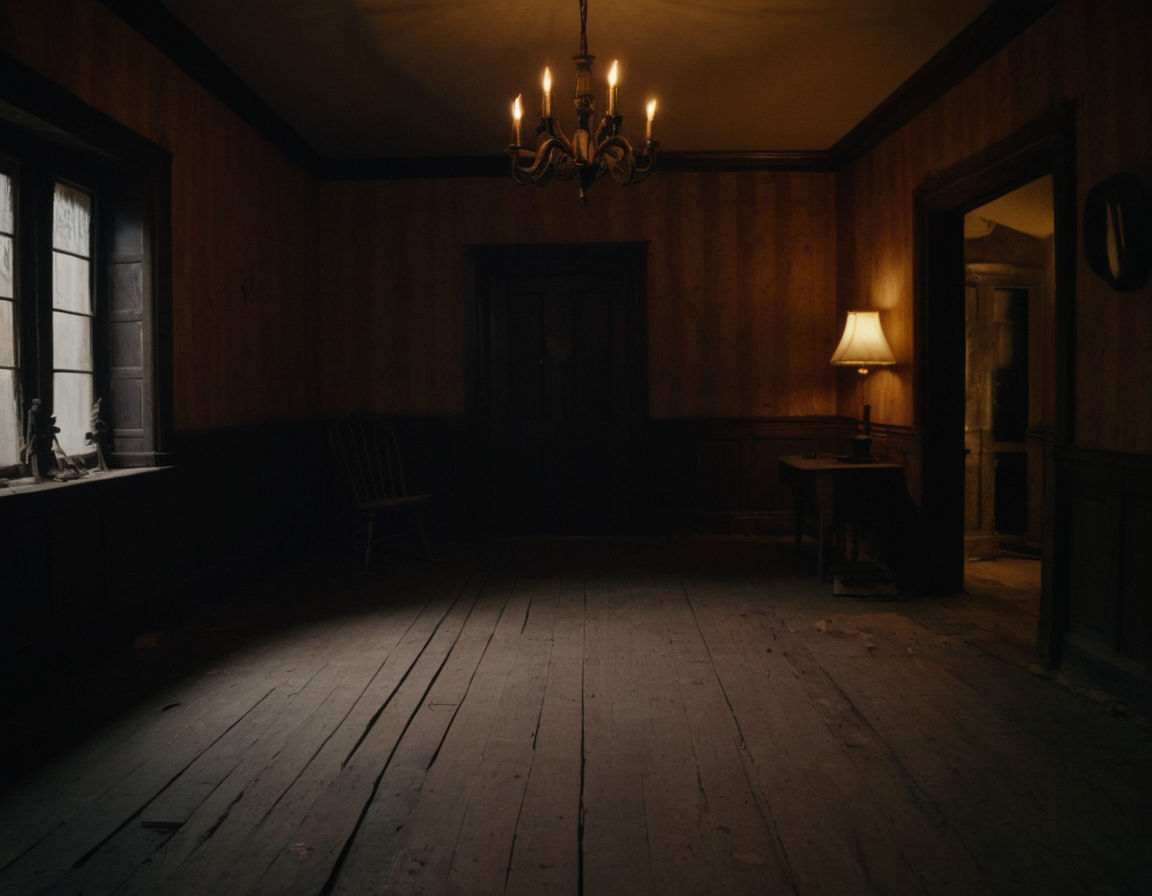Introduction
Horror Game Evolution has been a fascinating journey, witnessing a significant transformation from simplistic beginnings to today's spine-chilling photorealistic experiences. As technology continues to advance, the horror gaming genre has evolved to deliver intense psychological thrills and heart-pounding moments that keep players on the edge of their seats. This evolution is not just about better graphics but also about how sound design, storytelling, and gameplay mechanics come together to create truly immersive and terrifying experiences.
Early Beginnings of Horror Games
In the early days, horror games emerged with humble beginnings, marked by simple yet effective design choices. The first horror games in the industry laid down the foundation for what was to come, often characterized by pixelated graphics and basic sound effects. Titles like "Alone in the Dark" and "Resident Evil" set the stage for the horror gaming genre, leveraging the limitations of technology to evoke fear and suspense in players. Despite the primitive visuals, these games excelled in building tension and atmosphere through clever storytelling and gameplay mechanics.
Advancements in Game Graphics
The transition from pixelated graphics to more detailed visuals marked a significant milestone in the evolution of horror games. Improved graphics allowed developers to create intricate environments, lifelike character models, and realistic effects that intensified the horror experience. Games like "Silent Hill 2" and "Dead Space" showcased the potential of advanced graphics in creating hauntingly beautiful yet terrifying worlds for players to explore. The use of lighting, textures, and animations became crucial in setting the mood and enhancing the overall scare factor in modern horror games.
Introduction of Immersive Gaming
With the rise of technology, horror games have embraced immersive gaming experiences to deliver heightened levels of fear and suspense. The shift towards immersive gameplay, whether through virtual reality (VR) or interactive storytelling, has revolutionized how players engage with horror titles. Immersive experiences have the power to blur the line between reality and fiction, immersing players in a virtual world where every shadow and sound feels real. Games like "Amnesia: The Dark Descent" and "Outlast" have redefined horror gaming by offering players a truly immersive and terrifying journey filled with psychological horror and intense gameplay mechanics.
By embracing photorealistic graphics, advanced sound design, and immersive gameplay elements, modern horror games continue to push boundaries and redefine what it means to be scared in the digital realm. With each new advancement in technology, the evolution of horror games only promises to deliver even more chilling experiences that will haunt players for years to come.
Importance of Game Sound
In the realm of horror games, the auditory experience plays a crucial role in intensifying the overall sense of fear and suspense. Sound effects and music work in harmony to immerse players into the game's eerie world. Through carefully crafted soundscapes, developers can manipulate emotions, build tension, and deliver jump scares effectively. The spine-chilling whispers, creaking floors, and sudden crescendos of music can keep players on edge, heightening the immersive experience.
How Sound Contributes to Creating a Tense and Frightening Atmosphere

Building Anticipation: Subtle sounds like distant footsteps or whispers can create a sense of impending danger, keeping players alert and anxious.
Enhancing Jump Scares: Sudden loud noises or jarring sounds paired with shocking visuals can induce a visceral reaction, increasing the scare factor.
Setting the Mood: The right blend of music and sound effects can set a foreboding atmosphere, establishing the tone for the gameplay and reinforcing the horror elements.
Rise of Photorealism in Horror Games
With advancements in technology, horror games have witnessed a shift towards photorealistic graphics, bringing an unprecedented level of visual fidelity and realism to the gaming experience. Photorealism aims to blur the line between the virtual world and reality, immersing players in intricately detailed environments and lifelike characters.
Explanation of Photorealistic Graphics in Modern Horror Games
Realistic Environments: Photorealistic graphics enable developers to create stunningly detailed settings that amplify the sense of dread and immersion.
Character Expressions: Detailed facial expressions and animations add depth to characters, making interactions more realistic and emotionally engaging.
Dynamic Lighting: Advanced lighting techniques enhance the play of shadows and light, intensifying the eerie ambiance of horror games.
Evolution of Game Development
The landscape of game development has evolved significantly over the years, leading to more sophisticated and engaging horror game experiences. Technological advancements have revolutionized the way games are created, allowing developers to push boundaries in storytelling, gameplay mechanics, and immersion.
Overview of How Game Development Processes Have Evolved Over Time
From Pixels to Polygons: The transition from 2D pixel art to 3D polygonal graphics marked a significant leap in visual fidelity and game world complexity.
Innovations in Gameplay: Evolving hardware capabilities have enabled developers to introduce innovative gameplay mechanics, enhancing player agency and interactivity.
Narrative Depth: With better tools for storytelling and character development, modern horror games offer richer narratives that resonate with players on a deeper level.
Impact of Technological Advancements on Game Production and Storytelling
Virtual Reality: The advent of VR technology has revolutionized the horror genre by providing unparalleled immersion and a heightened sense of presence.
Procedural Generation: Tools like procedural generation allow for dynamic level design, creating unique experiences for players in each playthrough.
Artificial Intelligence: AI-driven behaviors in games add to the unpredictability factor, making encounters with enemies more realistic and terrifying.
Successful Horror Games Across Eras

Throughout the history of gaming, certain titles have left an indelible mark on the horror genre, shaping it into what it is today. These iconic games have contributed to the evolution of horror gaming, influencing design trends, narrative techniques, and player expectations.
Highlighting Iconic Horror Games from Different Eras
Silent Hill (1999): Renowned for its psychological horror elements and atmospheric design, Silent Hill set a new standard for immersive storytelling in games.
Resident Evil 2 (1998): A pioneer in survival horror, Resident Evil 2 introduced tense gameplay mechanics and cinematic storytelling that captivated players.
Amnesia: The Dark Descent (2010): Known for its emphasis on psychological horror and player vulnerability, Amnesia reinvented the genre with its focus on atmosphere and suspense.
By exploring these successful horror games from various eras, one can trace the evolution of game design, graphics, sound, and storytelling techniques that have collectively shaped the modern horror gaming landscape.
The Future of Horror Gaming
As technology continues to advance at a rapid pace, the future of horror gaming holds exciting prospects for both developers and players. Here are some key points to consider when speculating on future trends in horror game development:
Virtual Reality Integration: With the increasing popularity of virtual reality (VR) technology, horror games are expected to become even more immersive and terrifying. Players can transport themselves into the eerie worlds of horror games, experiencing fear like never before.
Artificial Intelligence Enhancements: Developers are likely to incorporate more sophisticated AI systems into horror games, creating more unpredictable and realistic enemy behaviors. This can lead to heightened tension and fear as players navigate through the game.
Interactive Storytelling: The future of horror games may involve more emphasis on player choices and branching storylines. By allowing players to make decisions that impact the game's narrative and outcome, developers can create a more personalized and suspenseful experience.
Cross-Platform Compatibility: As gaming platforms continue to diversify, the future of horror games may focus on seamless cross-platform compatibility. Players could enjoy the same spine-chilling experience whether they are gaming on consoles, PCs, or mobile devices.
Predictions on how Technology will continue to shape the Horror Gaming Experience
Further advancements in technology are expected to revolutionize the horror gaming experience in the following ways:
Real-time Ray Tracing: With the integration of real-time ray tracing technology, horror games can achieve unparalleled levels of realism in lighting, shadows, and reflections, adding to the overall atmosphere and immersion.
Enhanced Sound Design: Advanced audio techniques, such as binaural audio and 3D sound processing, will contribute to a more spine-tingling experience in horror games. Players can expect to hear every creak, whisper, and scream with uncanny precision.
Haptic Feedback and Sensory Feedback: Future horror games may utilize haptic feedback technology to simulate physical sensations, further immersing players in the game world. Coupled with sensory feedback devices like smell generators, the fear factor can be intensified, creating a truly immersive horror experience.
Procedural Generation: Procedural generation algorithms can create dynamic and unpredictable game environments, ensuring that each playthrough is unique. This innovation can keep players on edge, never knowing what horrors may lurk around the next corner.
Conclusion
In conclusion, the evolution of horror games from their pixelated beginnings to the photorealistic experiences of today has been a thrilling journey. Technology has played a pivotal role in enhancing the scare factor, taking horror gaming to new heights of immersion and terror.

Moving forward, the future of horror gaming holds endless possibilities, with advancements in VR, AI, storytelling, and cross-platform compatibility reshaping the landscape of the genre. As technology continues to push boundaries, players can look forward to even more chilling and unforgettable experiences in the world of horror games.



